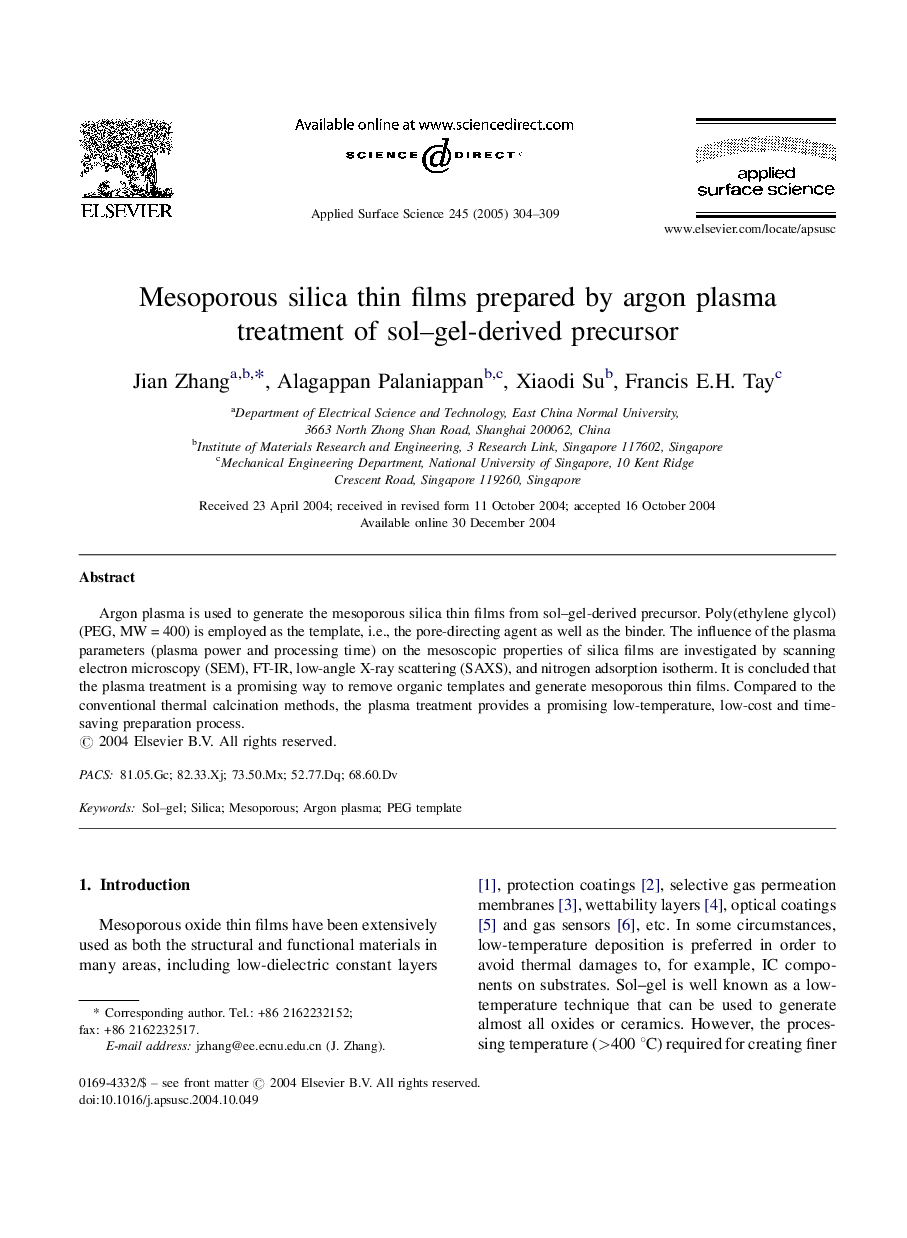| Article ID | Journal | Published Year | Pages | File Type |
|---|---|---|---|---|
| 9566812 | Applied Surface Science | 2005 | 6 Pages |
Abstract
Argon plasma is used to generate the mesoporous silica thin films from sol-gel-derived precursor. Poly(ethylene glycol) (PEG, MWÂ =Â 400) is employed as the template, i.e., the pore-directing agent as well as the binder. The influence of the plasma parameters (plasma power and processing time) on the mesoscopic properties of silica films are investigated by scanning electron microscopy (SEM), FT-IR, low-angle X-ray scattering (SAXS), and nitrogen adsorption isotherm. It is concluded that the plasma treatment is a promising way to remove organic templates and generate mesoporous thin films. Compared to the conventional thermal calcination methods, the plasma treatment provides a promising low-temperature, low-cost and time-saving preparation process.
Related Topics
Physical Sciences and Engineering
Chemistry
Physical and Theoretical Chemistry
Authors
Jian Zhang, Alagappan Palaniappan, Xiaodi Su, Francis E.H. Tay,
